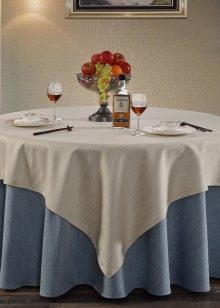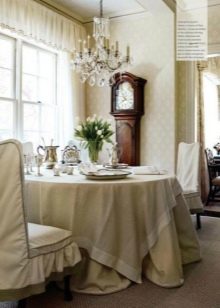Description of naperon and its use
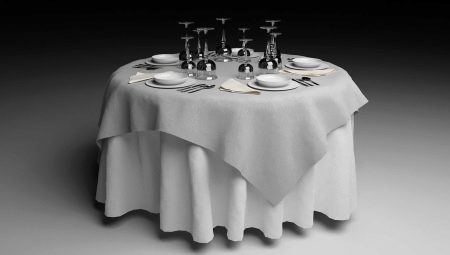
Naperons are most commonly used in restaurants, but they are also good for home use. These are small canvases that cover tables on top of regular textiles. What such products look like, and what they are for, we will tell you in this article.
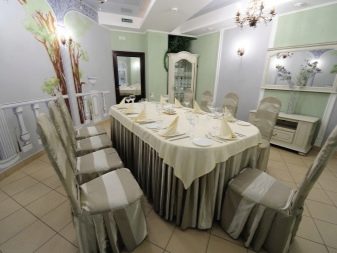

What it is?
The naperon is a mini tablecloth that covers the table top over the top of the main tablecloth. The product is used in places of public catering (in restaurants, cafes) with high traffic, where beautiful table setting, good design of furniture and environment, and strict compliance with hygiene standards are required. A small but very useful textile, it helps to keep the restaurant clean and creates a spectacular appearance. The top cloth is changed after each visitor, while the tablecloth can be fixed for several days.
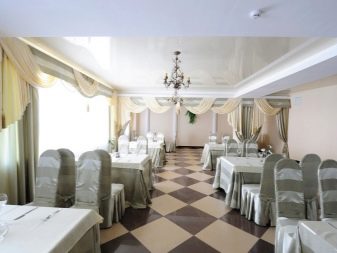
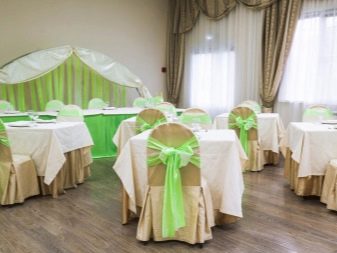
The naperon is made from a cheaper fabric than the main textile. The material is selected to be practical, easy to wash, clean, iron and look great visually. Modern industry provides a large number of synthetic and blended fabrics with the listed properties. The cover sheet protects the expensive tablecloth from stains and wear.
Besides practicality, naperon flawlessly decorates the textile design of the table. It often comes complete with napkins and chair covers, creating a spectacular dining group.
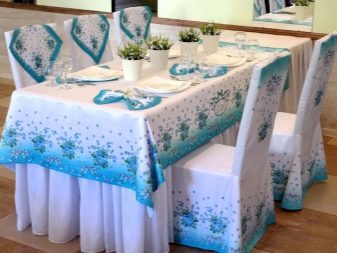
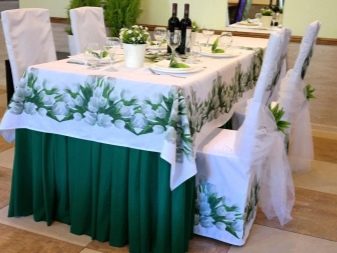
What are they?
Naperons do not lend themselves to simple classification, they are very diverse. They can be divided according to the structure of the fabric, color, shape, size.
By fabric
Different materials are used to make naperon, but they are all completely or half synthetic, since natural fabrics are difficult to care for, and they are not cheap.
The most commonly used materials are polyester, rayon, satin, pikachu, supplex and other modern materials.
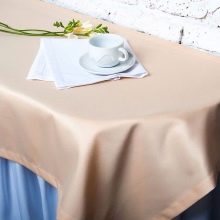
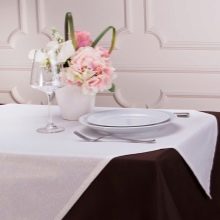
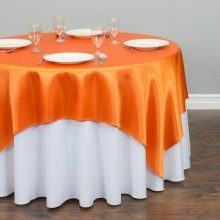
To size
Before stitching the top fabric, measure the parameters of the table top. Some fabrics shrink, which should be taken into account when sewing a product. The length of the overhang is not universally accepted - the fabric can only cover the surface of the table or hang down almost to the floor, allowing the tablecloths to be seen between the corners. The classic option can be considered the length of the overhang - 10-20 cm. The size of the products is clearly visible in the examples.
-
The short naperon, barely covering the surface, looks very stylish when served correctly.
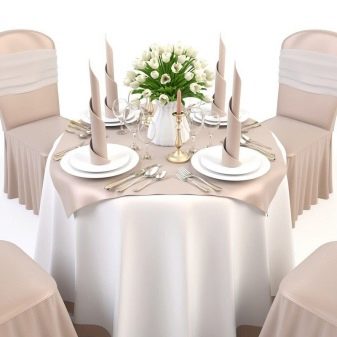
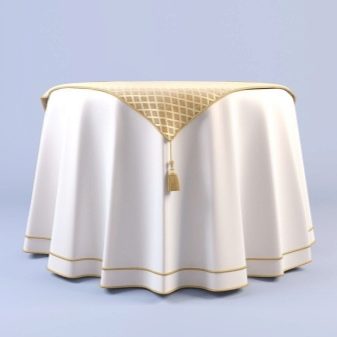
-
Sometimes the upper contrasting cover with embroidery or lace looks richer than a tablecloth.
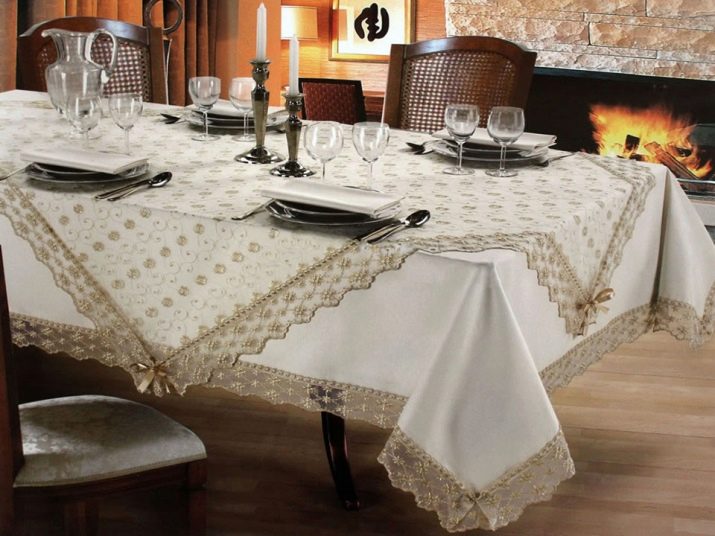
-
The most common topsheet is medium in size. It takes a little fabric, and the functionality and decorative properties remain at their best.

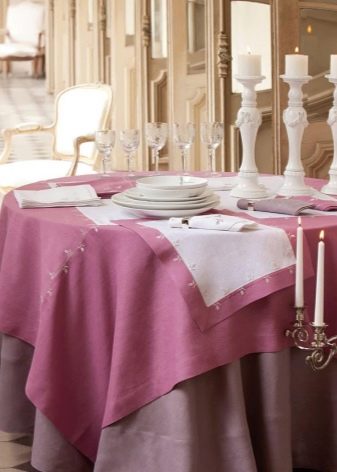
- On long banquet tables, naperons are not sewn in full length, they use standard square or rectangular products, covering the tabletop with 2-3 canvases. In VIP rooms, banquet tables do not use the top tablecloth at all, they use only the basic version.
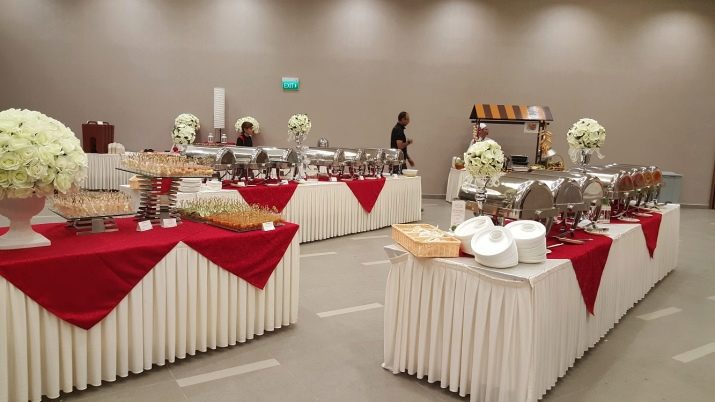
By form
A table of any shape can be covered with naperon, and it itself has a variety of geometry. It is not at all necessary for the upper tablecloth to be a reduced copy of the lower one. For example, round and square coverings look even more impressive than products with identical shapes.

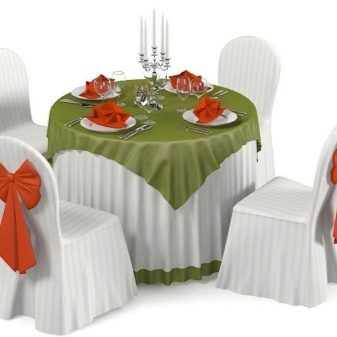
By color and decorative possibilities
The color scheme can be contrasting or monochrome, it all depends on the taste of the owner. Take a look at examples of how color is used in table decoration.
-
The professionally executed, exquisite monochrome decoration of the hall attracts no less than the accent options.
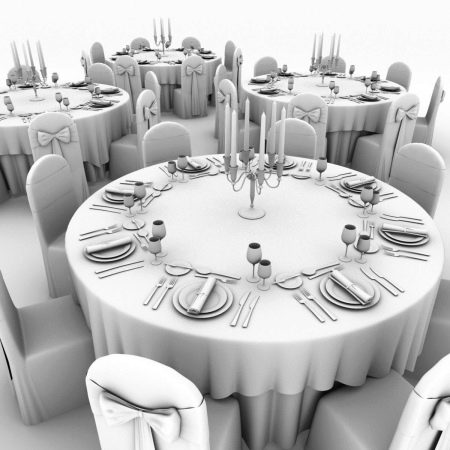
-
An example of a contrasting execution of a festive table.
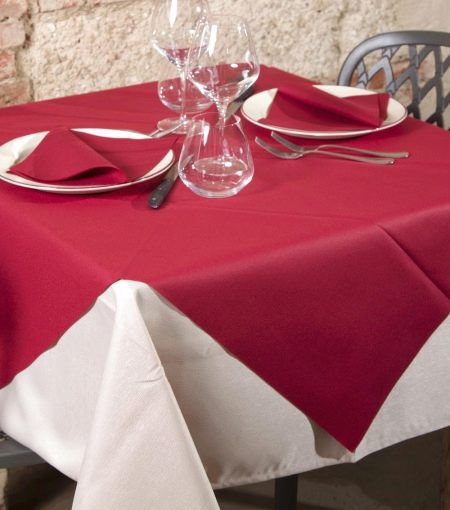
-
Incredibly beautiful design solution in black and white. The dining group and even cutlery are made in the form of a thin spider web.
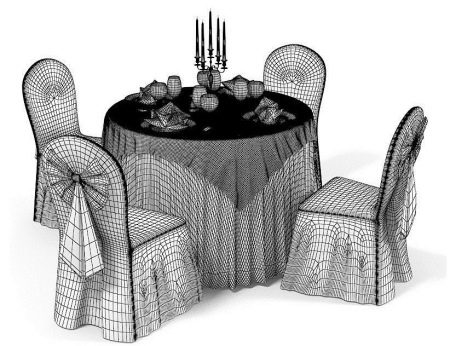
-
The table is decorated with dark and light lilac textiles over a white tablecloth. And although it is not recommended to use more than two shades, the harmony is observed in this case.
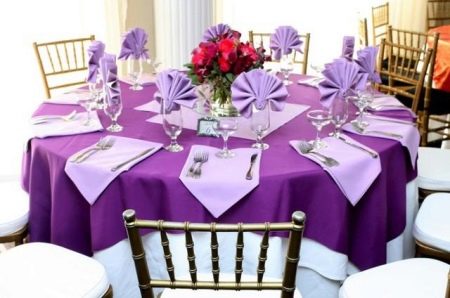
-
In the design of the presented furniture set, the condition is fulfilled, which allows using only two colors. The variety of designs is based on the pattern on the cases and napers.
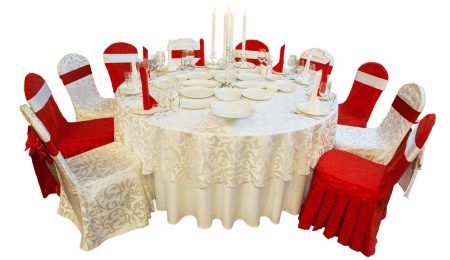
-
The beautiful textile set consists of top and bottom tablecloths as well as table napkins. Everything is made of the same patterned fabric.
Thanks to lace and various shapes of products, the multi-tiered design is clearly visible on the table.
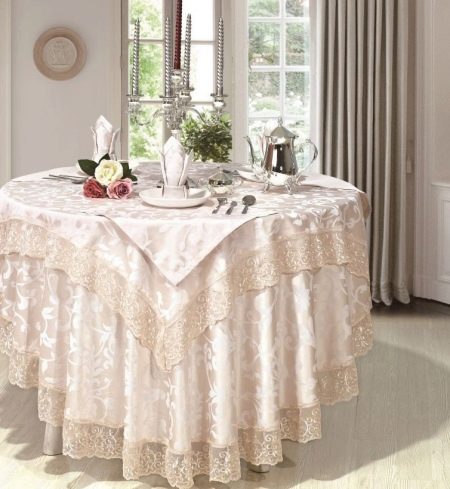
-
The decoration of the table in rich red shades looks solemn and solid.

- An unusual white fabric is used for naperon, its volume makes it stand out on a white tablecloth.
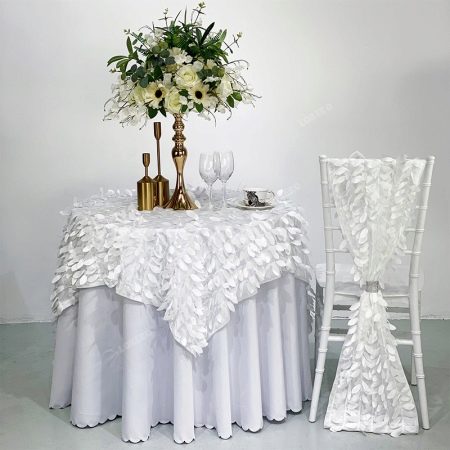
Features of use
The naperon is placed on top of the tablecloth, it is the first to catch the eye and is an important element of the table decor. Therefore, the canvas is selected taking into account the design of the room. For example, for country, you can lay checkered textiles, a canvas with a floral print is suitable for a Provence interior, for shabby chic, you need to choose pastel or deliberately faded fabrics.
Given the uneven shape of the countertops, the upper canvases are installed in different ways.
-
A medium-sized round naperon is covered over the round tablecloth, precisely following its geometry.
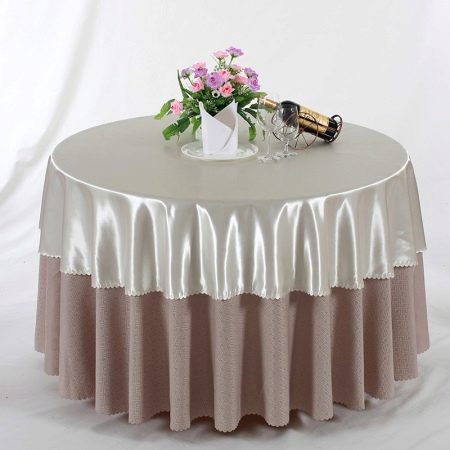
-
A variant of a square canvas on a round table. Two types of fabric are beautifully used for the entire furniture set.
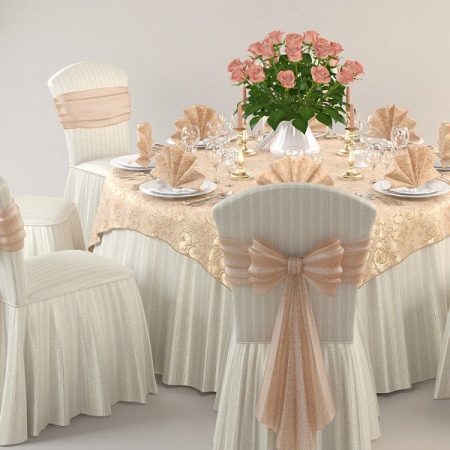
-
The oval table is designed in the same way, where the lower tablecloth has the shape of an oval, and the upper one is rectangular.
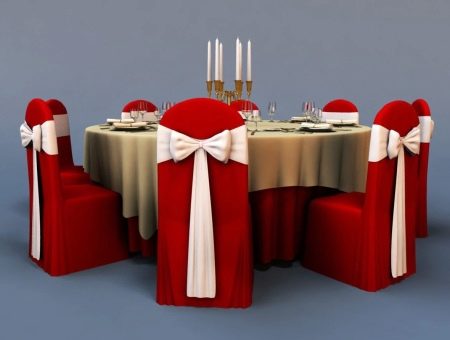
-
An example of a diagonal installation of a naperon on top of a square table.
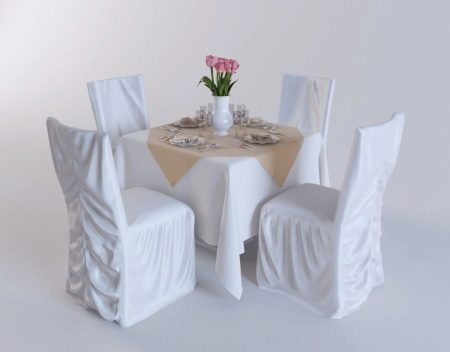
-
In this version, two square tablecloths of different sizes are installed identically - one on top of the other.
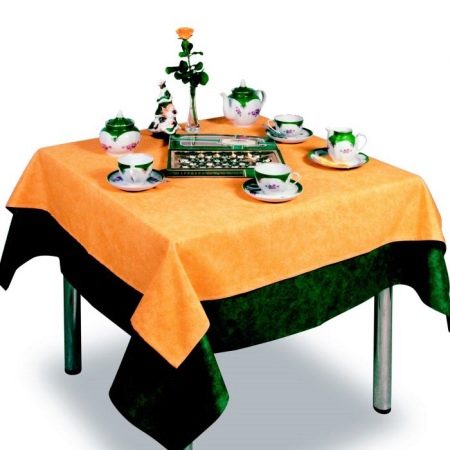
-
In the same way (matryoshka) you can cover rectangular tabletops.
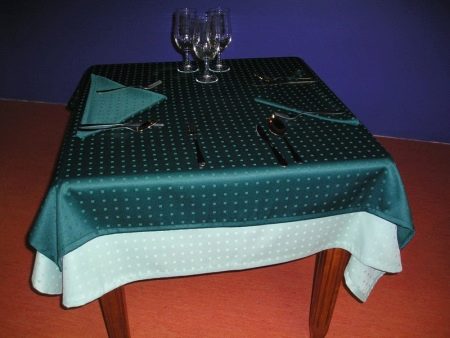
- Most often, a diagonal topcoat is used for rectangular tables, and the longer the surface, the more standard canvases can be laid on it.
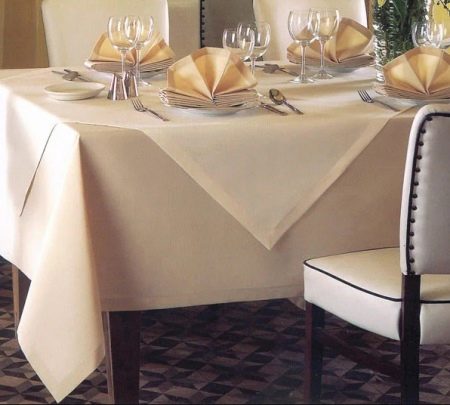
When choosing a textile set for a table (tablecloth, napron, napkins), you can also take into account the design of chair covers. It's not bad if the curtains or bedspreads on the upholstered furniture will also match the design of the dining group.
